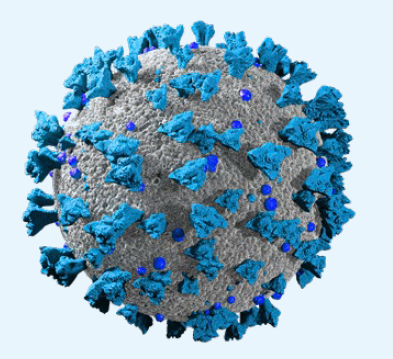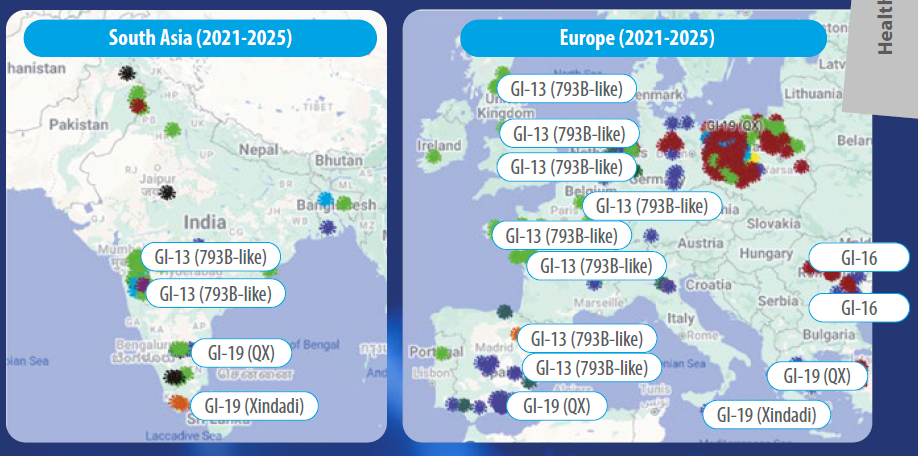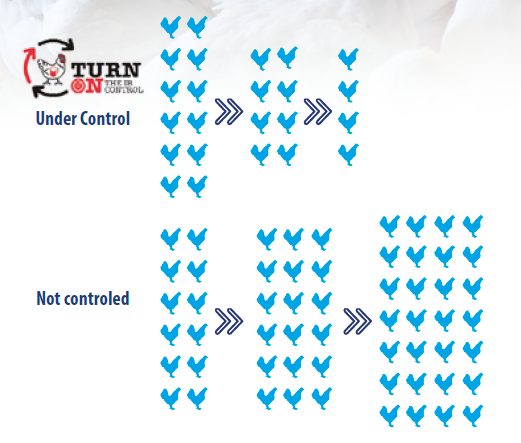
Animal Health & Pathology
The Strategy for a Proper Infectious Bronchitis Control
To read more content about aviNews International June 2025
Animal Health & Pathology
To read more content about aviNews International June 2025
It is well-known that Infectious Bronchitis (IB) is a significant disease in the poultry industry for several technical economic reasons.
This can lead to long-term health issues in the flock, such as secondary bacterial Infections, which can impact severely at farm and further processing levels by increasing mortality and meat yield loss (e.g. increased condemnation rate due to airsacculitis, lack of carcass uniformity, etc.).
The Virus
Caused by the Infectious Bronchitis Virus (IBV), this disease primarily affects the respiratory system but can also impact the reproductive and renal systems, leading to severe economic losses in commercial poultry farming.
Considering the high spread capability of this virus (IBV), which according to some studies 1 bird can infect up to other 20 birds, an effective IB management must consider good biosecurity practices, vaccination, and monitoring for early signs of the disease.

Protecting poultry flocks against IB is crucial for maintaining productivity, ensuring animal welfare, and securing the profitability of the poultry industry.
Strategy Control
1.Vaccine Preparation: Ensure vaccines are stored properly, at the correct temperature 2 to 8°C, typically in a refrigerator dedicated to vaccines, and follow the recommended & standardized procedures.
2.Water Quality: Use highquality, non-chlorinated water with low mineral content to reconstitute the vaccine. Demineralized water is the ideal.
3.Spray Equipment: Use appropriate spray equipment, with flat nozzles, to ensure even and consistent coverage.
4.Spray Droplet Size: Ensure the spray produces coarse droplets (100 to 200 microns) to avoid deep inhalation into the respiratory tract, which can cause adverse reactions. The droplet size is the key aspect to define of vaccine virus multiplication area in respiratory system.
5.Coverage and Timing: Aim for even and complete coverage of the chicks.

6.Monitoring: Regular checks to ensure that the spray equipment is functioning correctly and that the vaccine is uniformly applied. Use the Ceva Desvac Droplate® tool in a empty chick boxes to verify coverage.
7.Hygiene: Maintain strict hygiene standards to prevent contamination. Use dedicated equipment for vaccine preparation and application.
The percentages are for informational purposes only. The outcomes can vary from one hatchery to another according to the equipment used, and the training received to use the machine. They should not be considered as definitive.
Broad spectrum cross-protection is crucial for controlling Infectious Bronchitis (IB) in poultry, as in the field multiple IBV clusters can impact simultaneously.

Even in the same region, more than one strain can be found and challenge the birds. This way, a broad-spectrum cross-protection helps cover a wider range of these strains, reducing the risk of outbreaks, protecting the birds and flocks.
See 2 examples of IBV epidemiology:

Some vaccines can provide crossprotection against different IB strains. The combination of 2 different vaccines, such as IBird (1/96 strain – GI-13) and Massachusetts (GI-1) can provide protection against multiple serotypes and enhance the overall immunity of the flock.
Broad spectrum protection helps maintain the integrity of the respiratory tract, reducing the occurrence of secondary bacterial infections, and allowing the expression of the full genetic potential of the chicks.
Disease prevention
IBV spreads rapidly to neighboring flocks and farms due to its rapid capacity. In this context besides the disease clinical protection, blocking the field virus replication and shedding to the environment will be essential for Infectious Bronchitis control.
If the protection is achieved, it is possible to achieve too the disease prevention by the reduction of field virus shedding. It will provide several key benefits for poultry health and overall production efficiency, such as:

In a scenario in which the IB can reach Reproduction Rate R0 close to 20, what means that each infected bird can infect another 20 birds.
Because of the virus shedding control, the dissemination of the virus will be reduced, and over time the control of the Infectious Bronchitis.
Conclusion
The protection of poultry against Infectious Bronchitis is essential for sustainable poultry production. A comprehensive approach that includes effective vaccination, stringent biosecurity, and proper flock management is necessary to mitigate the risks associated with IBV.
By adopting these measures, poultry producers can safeguard flock health, improve production efficiency, and minimize economic losses, ensuring a stable and profitable poultry industry.